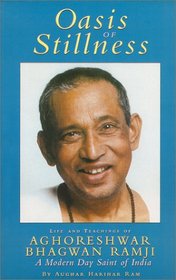Search -
Aghor Guru : Oasis of Stillness
Aghor Guru Oasis of Stillness
Author:
This is the first work that appears in the West devoted to the figure of Baba Aghoreshwar Bhagwan Ramji. The extraordinary life of this saint, with no doubts the most renewed spiritual teacher in the second part of this century in the holy city of Benares as well as all around India, so far has been scrupulously kept within the ancient tradition... more »
Author:
This is the first work that appears in the West devoted to the figure of Baba Aghoreshwar Bhagwan Ramji. The extraordinary life of this saint, with no doubts the most renewed spiritual teacher in the second part of this century in the holy city of Benares as well as all around India, so far has been scrupulously kept within the ancient tradition... more »
ISBN-13: 9780967070100
ISBN-10: 0967070104
Publication Date: 1/1/1997
Pages: 268
Rating: ?
ISBN-10: 0967070104
Publication Date: 1/1/1997
Pages: 268
Rating: ?
0 stars, based on 0 rating
Genres:




